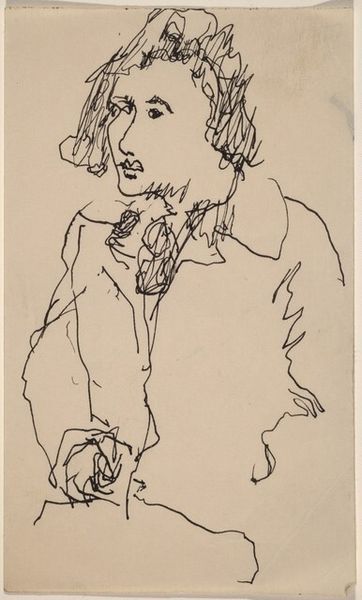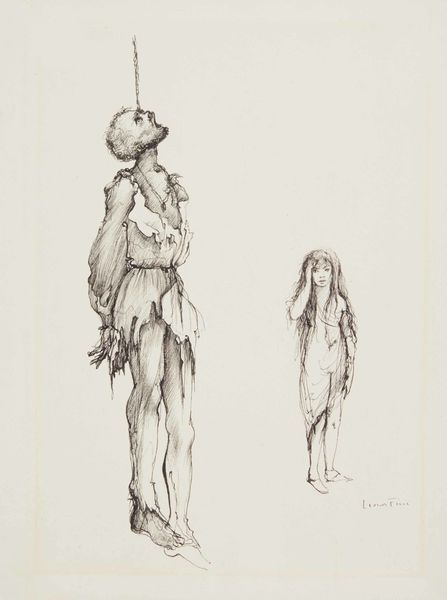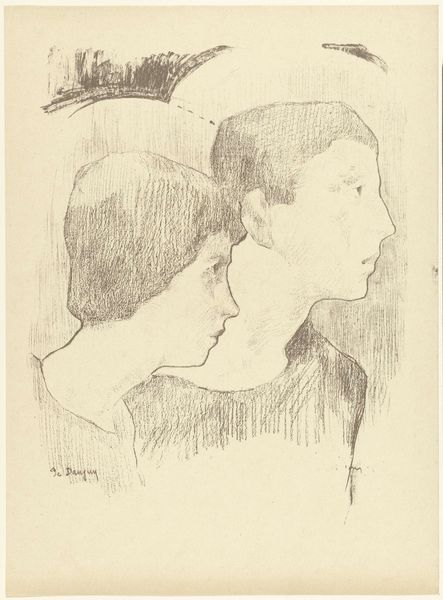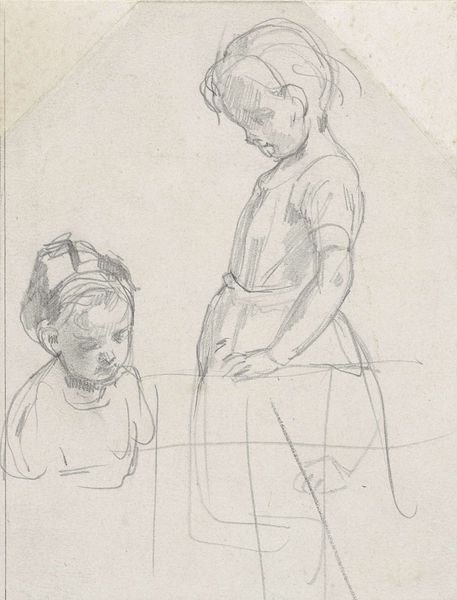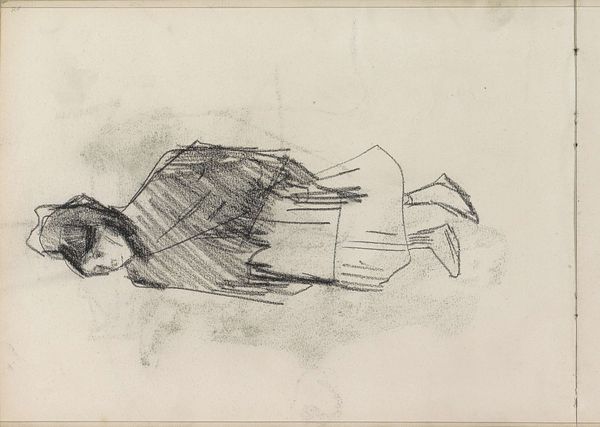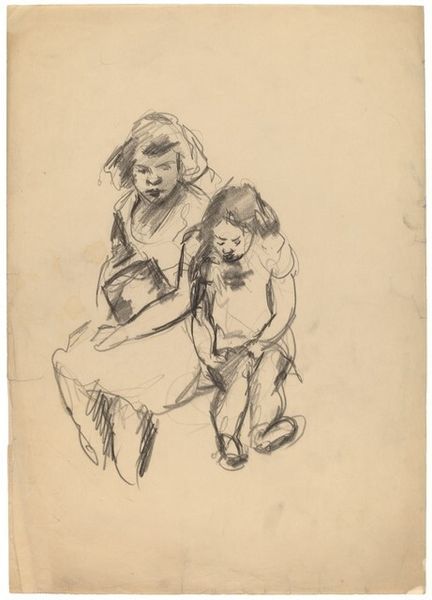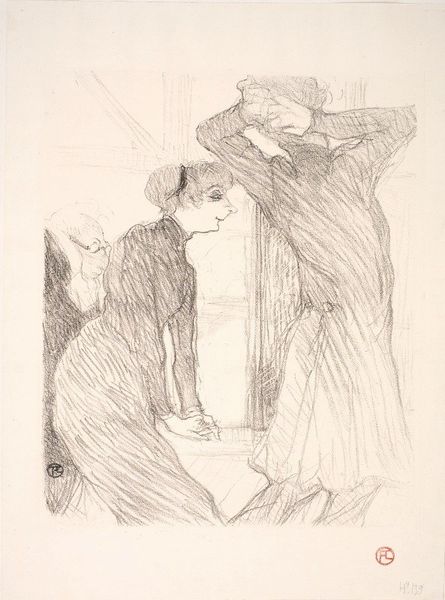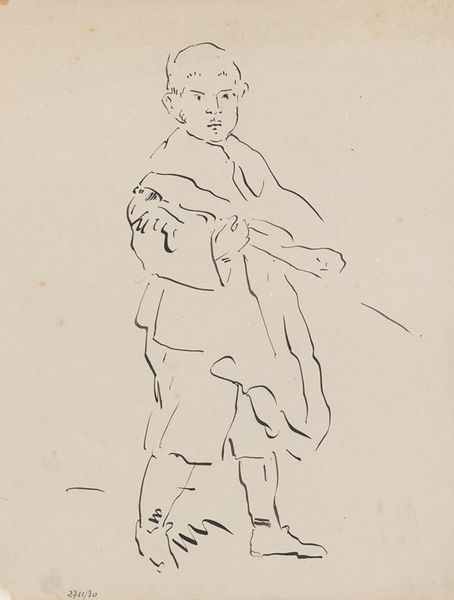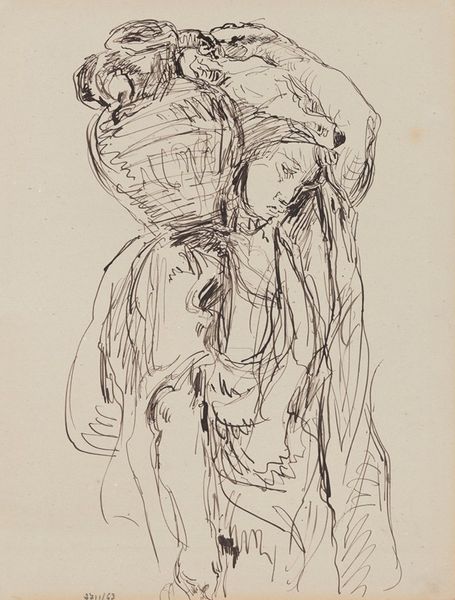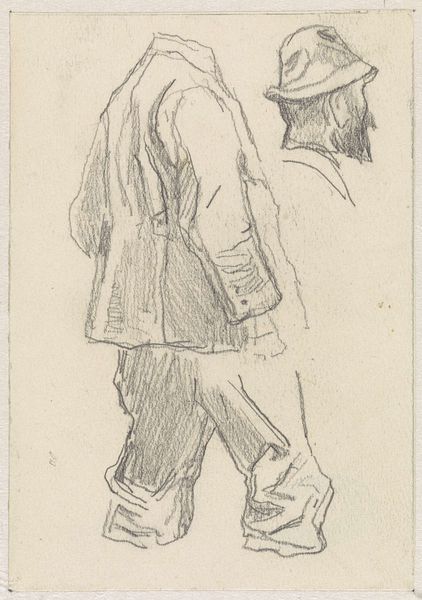
Prostitutes on the Sidewalk, Boulevard Sebastopol (Filles publiques sur le trottoir, c. 1927 - 1929
0:00
0:00
drawing, print, paper, ink, pen
#
portrait
#
drawing
# print
#
pen sketch
#
pencil sketch
#
figuration
#
paper
#
ink
#
pen
#
genre-painting
#
modernism
Copyright: National Gallery of Art: CC0 1.0
Curator: Here we have André Dunoyer de Segonzac’s "Prostitutes on the Sidewalk, Boulevard Sebastopol", created circa 1927-1929. It's an ink and pen drawing on paper, and its focus brings to mind questions about the social visibility of marginalized communities. Editor: My initial reaction is that it feels strikingly sparse. The quick, almost ephemeral lines give a sense of detachment, as if these women are figures observed but not truly seen. The almost empty space accentuates the figures' isolation. Curator: Precisely. Segonzac's loose linework, typical of his style, is important for understanding the era. These quick sketches could have been made on the spot in the public space, and therefore hold significance in considering representation in urban life and the evolving role of women during the Interwar period. It hints at a burgeoning bohemian scene juxtaposed with a growing industry. Editor: Yes, it’s critical to remember that artistic choices aren’t neutral. This "snapshot" aesthetic, while seemingly objective, engages with broader historical tropes surrounding the depiction of women, especially those in precarious circumstances. There is also something inherently voyeuristic to this. Is Segonzac showing the societal marginalization, or participating in it? Curator: I see your point. The artwork encourages an awareness of social stratification within 1920s Paris. By rendering these women in a fleeting style, Segonzac draws attention to their ambiguous place in society. He makes us question how we see them in the urban fabric. Editor: I think we have to consider, too, who this image was made *for*. It's inscribed "Pour Frank Crowninshield," so likely intended as a gift for a wealthy magazine editor, circulating within a specific, privileged milieu. It raises uncomfortable questions about who has the power to represent whom and for what audience. Curator: That's insightful. Ultimately, I think it's a testament to how art serves as a reflection—and a critique—of its social landscape, inviting discussions around spectatorship, class, and representation. Editor: Absolutely. Even a simple sketch can unveil complex power dynamics, reminding us that representation itself is always a form of intervention.
Comments
No comments
Be the first to comment and join the conversation on the ultimate creative platform.

